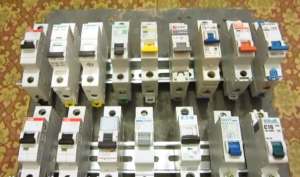
All of us, when buying any product, are interested in how real parameters correspond to the declared characteristics.
This is especially important when we choose devices designed to protect our electrical networks. For example, when purchasing a circuit breaker, I would like to sleep peacefully with the thought that in case of excess load, the “machine” will turn off without overheating (or igniting) wires, sockets ...
Circuit breakers have two types of protection: thermal and electromagnetic.
On the operation of the thermal release, we will talk today.
If the actual current is exceeded by 1.45 times or more of the rated current of the "automatic" series B, C or D, the shutdown should occur in less than 60 minutes.
So let's see - which of the leading brands is able to comply with the required parameter, which, by the way, is regulated by GOST.
So…
As experimental subjects, circuit breakers of the C series and a rated current of 16 A were taken.
The test current will correspond to 1.45In, i.e. 1.45 * 16 \u003d 23.2A.
The test current is set using the RETOM 21 device. Ultimately, we are interested in the trip time of the circuit breaker, which will be recorded by the test device.
The test is not conducted to advertise any brand. As they say in sports: “May the strongest win!”
Each circuit breaker will be connected to the installation in turn. Having “loaded” the machine with a current of 23A, we will wait for it to turn off. The test results are listed in the table:
A more detailed course of testing can be seen in the author's video: